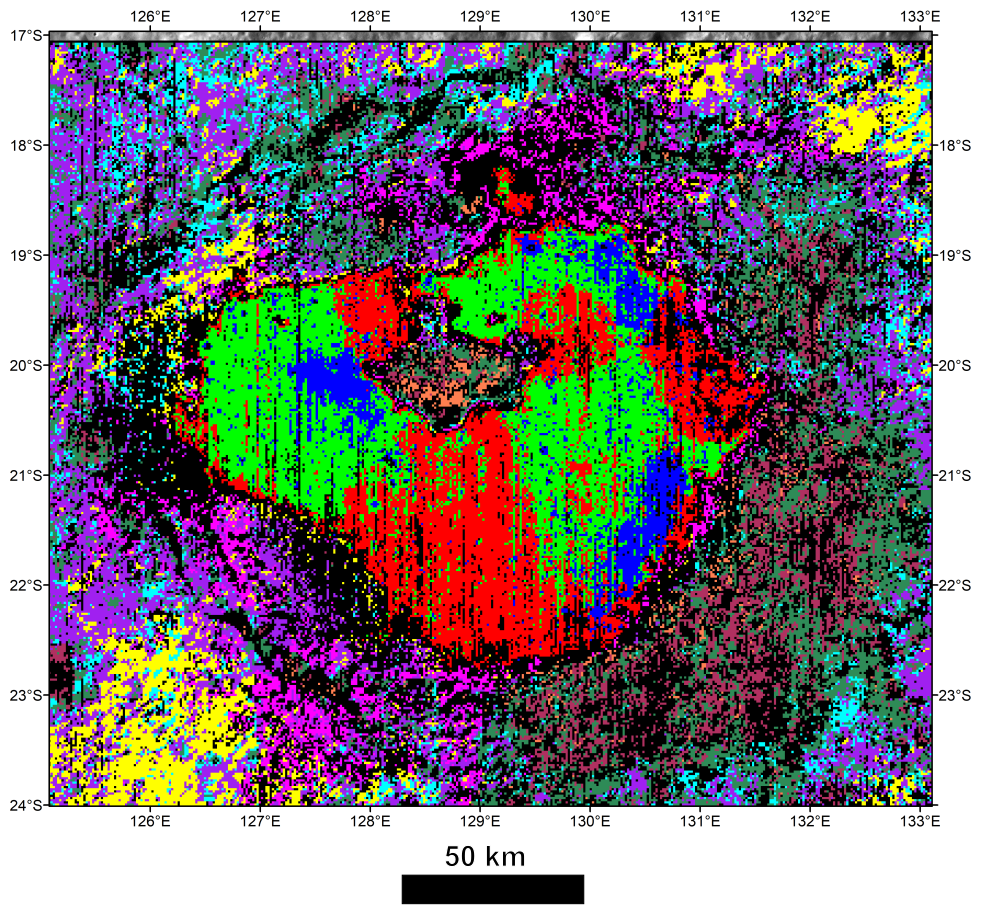Spectral properties of the lunar Tsiolkovskiy crater through Spectral Units identification and analysis
- 1Department of Geosciences, University of Padua, Padua, Italy
- 2INAF-Istituto di Astrofisica e Planetologia Spaziali, Rome, Italy
Morpho-stratigraphic maps lay the groundwork for the geologic characterization of a planetary surface. Nevertheless, they do not provide the same level of information as geologic Earth maps. They thus need to be integrated with information derived from the multispectral and hyperspectral data.
The Clementine-based map produced for the lunar far side Tsiolkovskiy crater (20.4°S, 129.1°E) [1] allowed a first understanding of the composition, in particular for the basaltic infilling, of this crater.
In this work, the higher spectral and spatial resolution data obtained by the M3 imaging spectrometer [2] were used to derive a set of spectral indices (reflectance at 540 nm, band depth at 1000 and 2000 nm, and the spectral slope between 540 nm and the maximum of the first and second shoulder of the band depth at 1000 nm) helpful in enhancing compositional variations of the area. Rather than interpreting each index separately, 10 Spectral Units (Figure 1) conveying the spectral information fulfilled by all the spectral parameters were defined [3]. Notably, three Spectral Units discriminated on the smooth infilling of Tsiolkovskiy, which are fairly well correlated with the ones described on the basis of the Clementine UVVIS color ratio basemap, present the lowest reflectance values and the strongest absorptions around 1000 and 2100-2200 nm.

Figure 1. Spectral Units map of Tsiolkovskiy crater. Each unit summarizes the information held in several spectral parameters.
Given that pyroxenes are among the most common minerals on the Moon, we then compared the absorption band centers at 1000 and 2000 nm of the Spectral Units with those of RELAB synthetic pyroxenes [4,5]. The analysis revealed that most of the material of Tsiolkovskiy is characterized by a mineralogy similar to pigeonite or augite, a low Ca and Mg content and relatively high Fe. Some Spectral Units, however, do not fall inside a defined range and show a displacement of the band center at 1000 nm, possibly indicating the influence of a different component to be further investigated.
This work represents a step forward in the understanding of the mineralogical and compositional analysis of the Tsiolkovskiy crater and in the integration between morpho-stratigraphic and spectral units and between spectral units defined on different multispectral data.
Acknowledgements: We gratefully acknowledge funding and support from the PRIN-INAF2019-MELODY project and support from the EU’s H2020 research and innovation program under grant agreement No. 871149 (GMAP).
References: [1] Tognon et al., 2021, MDPI. [2] Pieters et al., 2009, Current Science. [3] Zambon et al., 2022, JGR. [4] Klima et al., 2011, Meteoritics and Planetary Science [5] Klima et al., 2011, JGR.
How to cite: Tognon, G., Zambon, F., Carli, C., and Massironi, M.: Spectral properties of the lunar Tsiolkovskiy crater through Spectral Units identification and analysis, Europlanet Science Congress 2022, Granada, Spain, 18–23 Sep 2022, EPSC2022-622, https://doi.org/10.5194/epsc2022-622, 2022.

